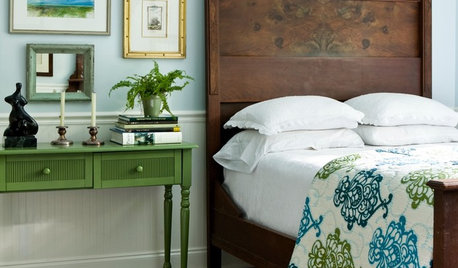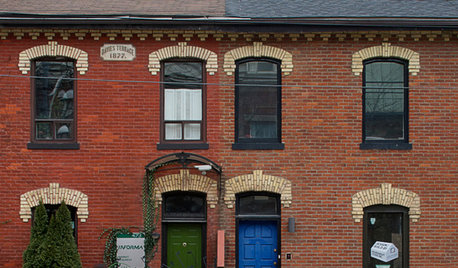This confuses me when starting seeds
leava
13 years ago
Related Stories

GARDENING GUIDESHow to Plant a New Lawn From Seed
Choose from more grass varieties and save money over sod by starting your lawn from seed
Full Story
GARDENING FOR BUTTERFLIESA Quick-Start Guide to Bird-Watching for Fun and Learning
Set out some seed and grab your field guide. Bird-watching is an easy, entertaining and educational activity for the whole family
Full Story
GARDENING GUIDESHow to Stop Worrying and Start Loving Clay Soil
Clay has many more benefits than you might imagine
Full Story
GARDENING GUIDESGet a Head Start on Planning Your Garden Even if It’s Snowing
Reviewing what you grew last year now will pay off when it’s time to head outside
Full Story
CONTRACTOR TIPSBuilding Permits: When a Permit Is Required and When It's Not
In this article, the first in a series exploring permit processes and requirements, learn why and when you might need one
Full Story
CONTAINER GARDENSContainer Garden Basics: How and When to Water Potted Plants
Confused about soil moisture, the best time to water and what watering device to use? This guide can help
Full Story
LIFEWhen a Household Divides — How to Reinvent Your Home Style
Consider starting over an opportunity to discover yourself anew. Here, some insight to help you create a freshly inspiring home
Full Story
FRONT DOOR COLORSFront and Center Color: When to Paint Your Door Blue
Who knew having the blues could be so fun? These 8 exterior color palettes celebrate sunny-day skies to electric nights
Full Story
FUN HOUZZ14 Things You Need to Start Doing Now for Your Spouse’s Sake
You have no idea how annoying your habits at home can be. We’re here to tell you
Full StorySponsored




mulberryknob
elkwc
Related Discussions
zone 9b-ers: When are you starting veggie seeds indoors?
Q
When to plant fall crops in my area and when to start seeds
Q
How do I know when to start seeds?
Q
When to start cole crop seeds?
Q
slowpoke_gardener
Okiedawn OK Zone 7
susanlynne48
helenh
jcheckers
owiebrain
seedmama
soonergrandmom
Okiedawn OK Zone 7
owiebrain
helenh
biradarcm
biradarcm
leavaOriginal Author
seedmama
helenh
Okiedawn OK Zone 7
owiebrain
owiebrain
jcheckers
Okiedawn OK Zone 7
biradarcm
Okiedawn OK Zone 7
biradarcm
tomatomanbilly
mulberryknob
Okiedawn OK Zone 7
joellenh
carsons_mimi
seedmama
susanlynne48
Okiedawn OK Zone 7
susanlynne48
mlle.franco
Okiedawn OK Zone 7
gardenrod
mlle.franco
biradarcm
Okiedawn OK Zone 7
biradarcm
Okiedawn OK Zone 7
biradarcm
joellenh
Okiedawn OK Zone 7
susanlynne48
Okiedawn OK Zone 7
joellenh
joellenh